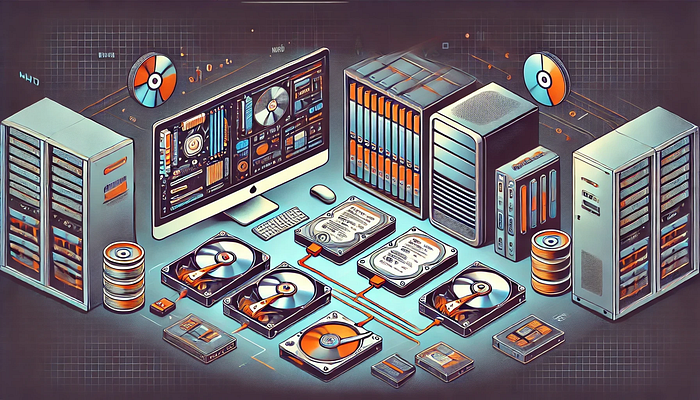Dive into the world of file systems and partition schemes. Learn the key differences between FAT, exFAT, NTFS, MBR, and GPT to optimize your storage devices for better performance and compatibility.
In the realm of data storage and management, understanding file systems and partition schemes is crucial for optimizing your computer's performance and ensuring data integrity. This article will demystify the differences between two sets of important concepts: FAT/exFAT/NTFS file systems and MBR/GPT partition schemes.
File Systems: FAT vs exFAT vs NTFS
File systems are methods used by operating systems to store, organize, and retrieve files on storage devices. Let's compare three popular file systems: FAT, exFAT, and NTFS.
FAT (File Allocation Table)
FAT is one of the oldest file systems, introduced in 1977. Despite its age, it's still widely used, especially for small removable storage devices.
Pros of FAT:
- Simple structure
- Wide compatibility across different operating systems
- Ideal for small storage devices (< 32GB)
Cons of FAT:
- Limited file size (max 4GB in FAT32)
- No built-in file compression or encryption
- Less efficient use of disk space
exFAT (Extended File Allocation Table)
Introduced by Microsoft in 2006, exFAT was designed to address the limitations of FAT32, particularly for flash drives and SD cards.
Pros of exFAT:
- Supports very large file sizes (up to 16 exabytes)
- Compatible with most modern operating systems
- More efficient than FAT32 for large storage devices
- Ideal for external hard drives and SD cards
Cons of exFAT:
- Less compatible with older devices and operating systems
- Lacks the advanced features of NTFS (like file permissions and encryption)
NTFS (New Technology File System)
NTFS, introduced by Microsoft in 1993, is the default file system for Windows NT and later versions.
Pros of NTFS:
- Support for very large file sizes (up to 16 EB theoretically)
- Built-in file compression and encryption
- Better security features with access control lists
- Journaling for improved reliability
Cons of NTFS:
- Limited compatibility with non-Windows systems
- Slightly more complex, which can impact performance on older hardware
Partition Schemes: MBR vs GPT
Partition schemes define how data is organized on a storage device at the lowest level. The two main types are MBR and GPT.
MBR (Master Boot Record)
MBR is the traditional partition scheme used since the early days of personal computing.
Pros of MBR:
- Wide compatibility, especially with older systems
- Simple structure
Cons of MBR:
- Limited to 4 primary partitions
- Maximum partition size of 2TB
- Less robust, with no backup partition table
GPT (GUID Partition Table)
GPT is a more modern partition scheme, part of the UEFI (Unified Extensible Firmware Interface) standard.
Pros of GPT:
- Support for up to 128 partitions by default
- Maximum partition size of 9.4 ZB (zettabytes)
- Stores multiple copies of partitioning data for improved reliability
- Required for booting from drives larger than 2TB
Cons of GPT:
- Not compatible with older operating systems
- Requires UEFI-compatible motherboard for booting
Which Should You Choose?
The choice between these file systems and partition schemes depends on your specific needs:
- For maximum compatibility, especially with older devices: FAT + MBR
- For large external drives and cross-platform use: exFAT + GPT
- For Windows-only environments with advanced features: NTFS + GPT
- For large drives (>2TB) and modern systems: NTFS or exFAT + GPT
Remember, while you can mix and match (e.g., NTFS on MBR), certain combinations work better together, especially on newer systems.
Conclusion
Understanding the differences between FAT, exFAT, NTFS, MBR, and GPT is essential for anyone working with data storage. By choosing the right combination for your needs, you can ensure optimal performance, compatibility, and data integrity for your storage devices.
Whether you're setting up a new drive, troubleshooting storage issues, or simply curious about the technology behind your data, this knowledge will serve you well in managing your digital world. The addition of exFAT to your toolkit provides a valuable middle ground between the simplicity of FAT and the advanced features of NTFS, especially for external drives and cross-platform scenarios.
If you enjoyed this article, please consider following me on LinkedIn and Medium. I write about a variety of topics related to AI & ML, and I would love to connect with you on these platforms.

